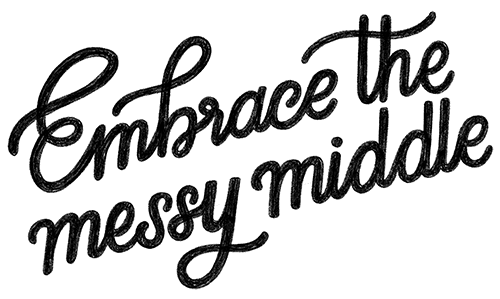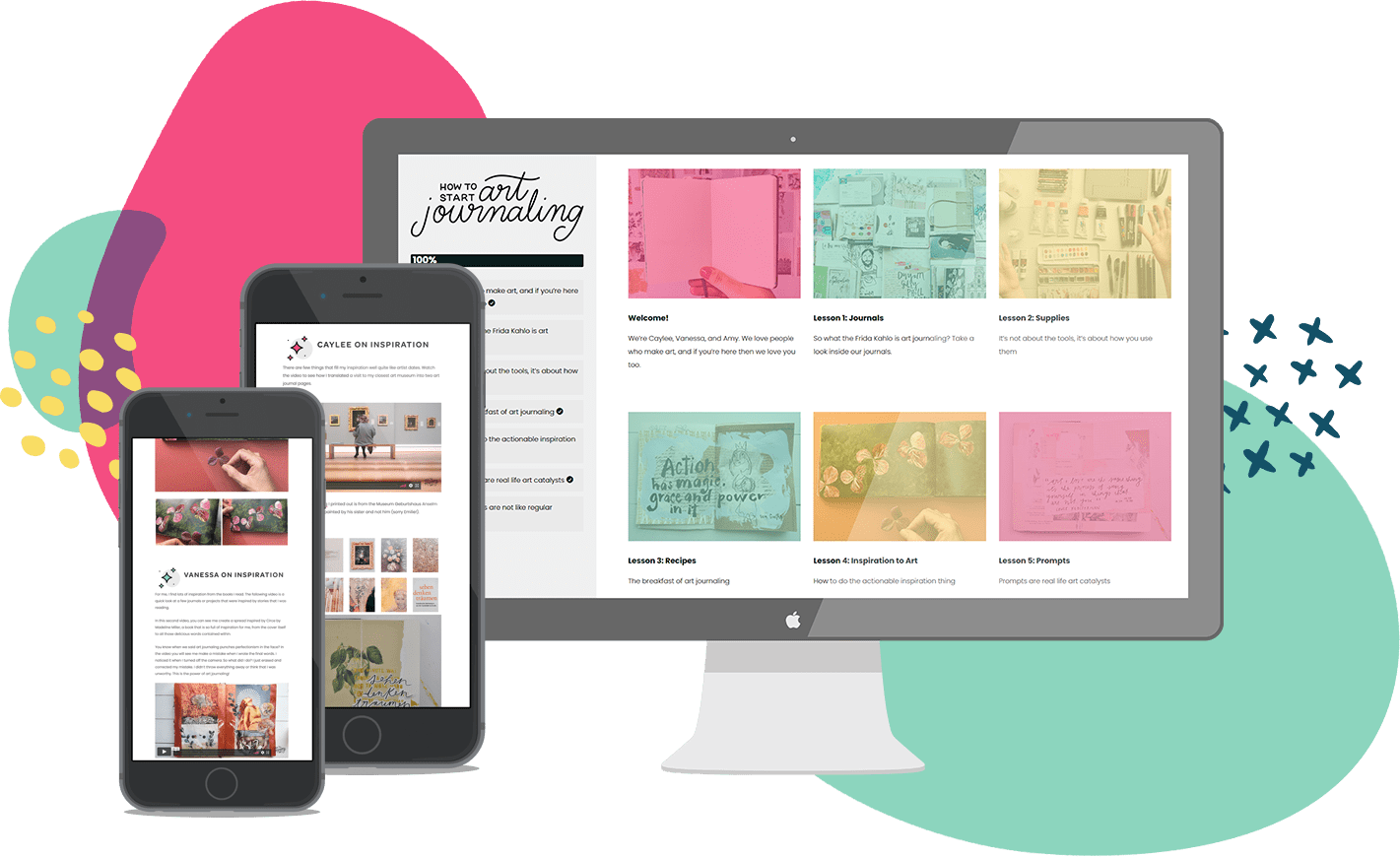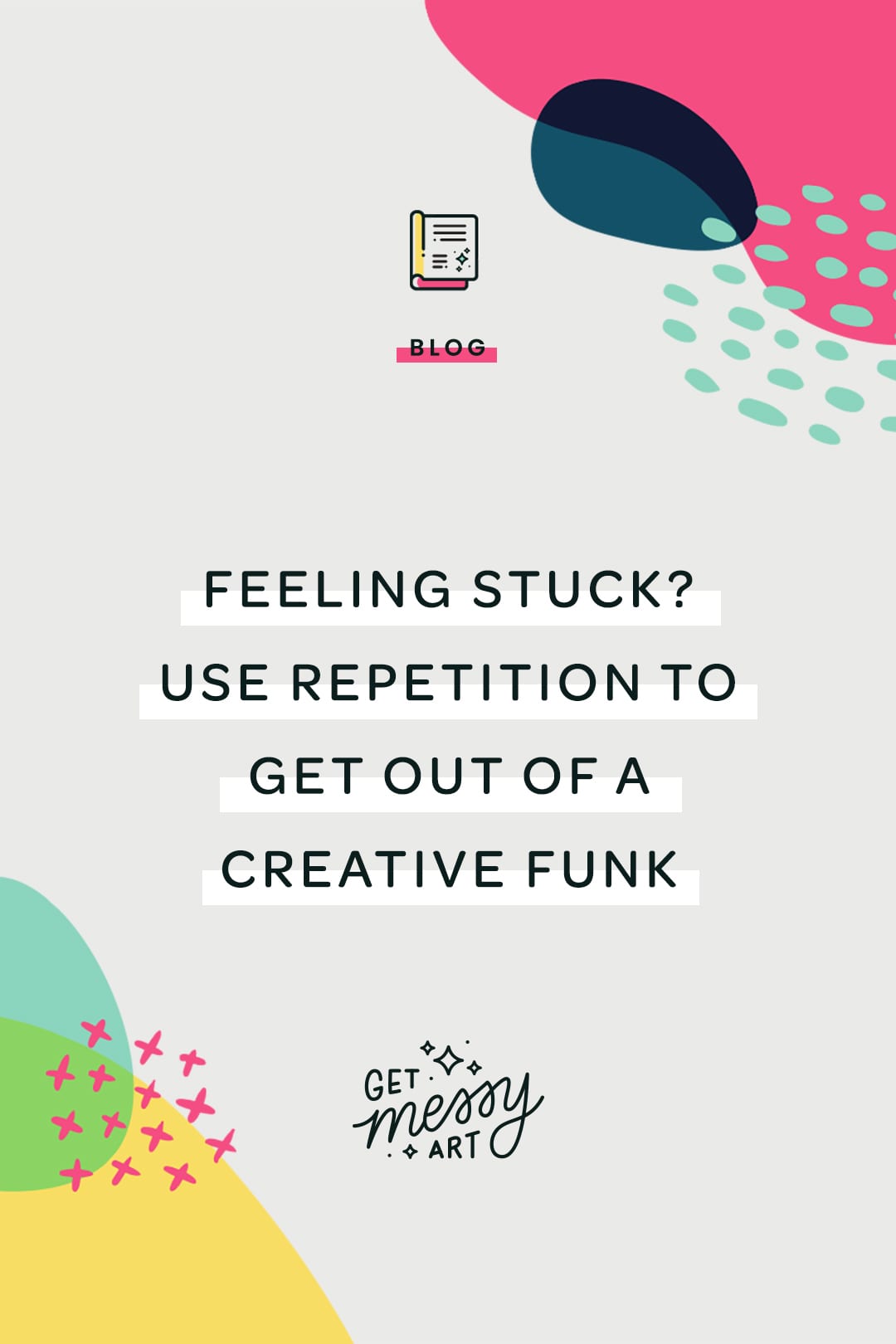Creative funks are never welcome. They have a nasty habit of either sneaking up on us when we least expect it, or rolling in like a slow storm over the horizon, so we can see them coming a mile away. The following symptoms of being in a creative funk may sound familiar to you: Stuck for ideas. No time to make. Everything you do make when you actually find the looks like rubbish.

There is some good news though. There are a bunch of tried and tested tools out there to help us through these times – and today I want to give you one more to add to your toolkit. Here’s how using repetition can help you to get out of your creative funk.
(Plus, for anyone who read my last blog post, you’ll find out more about that time I used instant coffee to make an artwork.)
Home base
Using ritual and repetition helps us to set a structure around our creative practice. You can think of this structure as your foundation, your home base; something to lean on which will support you until you’re steady on your own two feet again.
What kind of structure am I talking about here? It could include…
- Setting a particular time of day to make
- Working with only one medium
- Exploring one theme, idea or form
- Repetition in mark making
- Building rituals into your art making, or creative rituals into your day
Setting a structure gets us out of choice paralysis and out of making excuses. It gives us the answers to the icky questions of what to make and when to make it: so instead of sitting down to face the overwhelm of the blank page / canvas / sketchbook, we have a tangible starting point. We have permission to repeat the same thing over and over; to fall back on something that we’ve done before. In short: we’re out of our heads and into the doing.
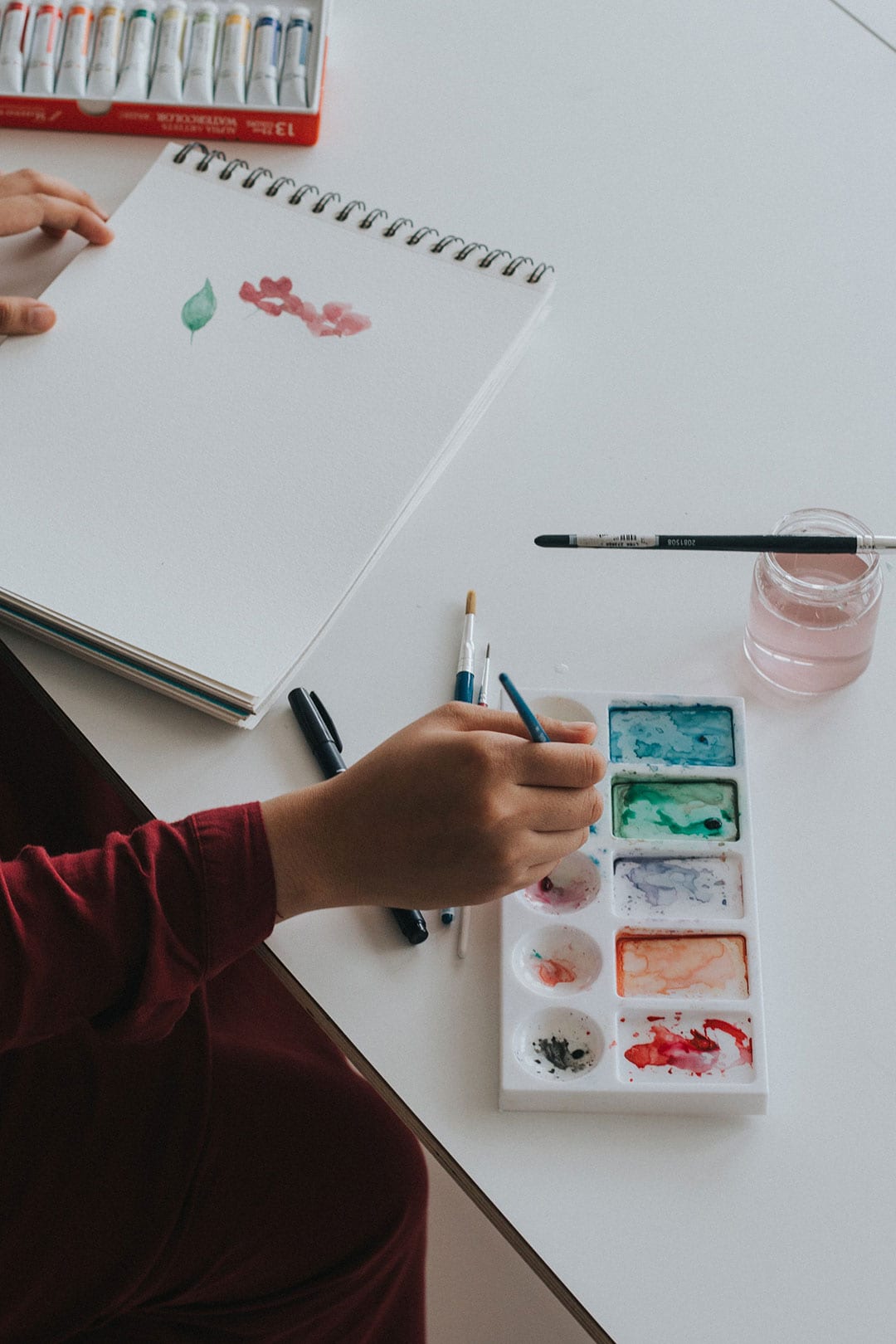
Take Action #1: Set your structure
Start by figuring out a small, doable, bite-sized task that can be repeated – whether it’s drawing for five minutes on your daily commute, filling one page of your journal, or painting one tiny patch of colour each day. It doesn’t have to be a daily thing, but it helps if it’s regular. Thirty day challenges are a great way to get started. They don’t work for everyone, though – so design a structure that works for you. Make it your own. Feel free to use the dot points below as a rough checklist to see if your structure will provide what you want it to.
From lofty goals to just doing
I remember my printmaking tutor telling us about Bea Maddock in art school. Going through a period of artist’s block, she set herself the task of making one piece of recycled paper each day – using the front of that day’s newspaper – and blind printing the date and amount of time worked per day onto each sheet. These forty sheets became a beautiful artist’s book which speaks of ritual, slow-and-steady doing, and the trials of the creative process.
A couple of years later I was going through my own creative drought, and the story of Bea came back to me. I didn’t need to be making anything brilliant, I just needed to be making. Pressed for time, I combined my desire to paint with my daily coffee routine: each morning before drinking my dodgy instant coffee, I used it to make a mark on a little square of watercolour paper.
The repetition allowed me to create without worrying about time or outcome, and to explore what kind of marks it was possible to make with one colour, one medium, one moment.
Sometimes I used a paintbrush, sometimes a spoon; sometimes I dipped the paper straight into the mug. I became excited about testing out new mark-making ideas the next day. A sense of playfulness had returned to me: I called the finished artwork In an Instant (I know, very punny).
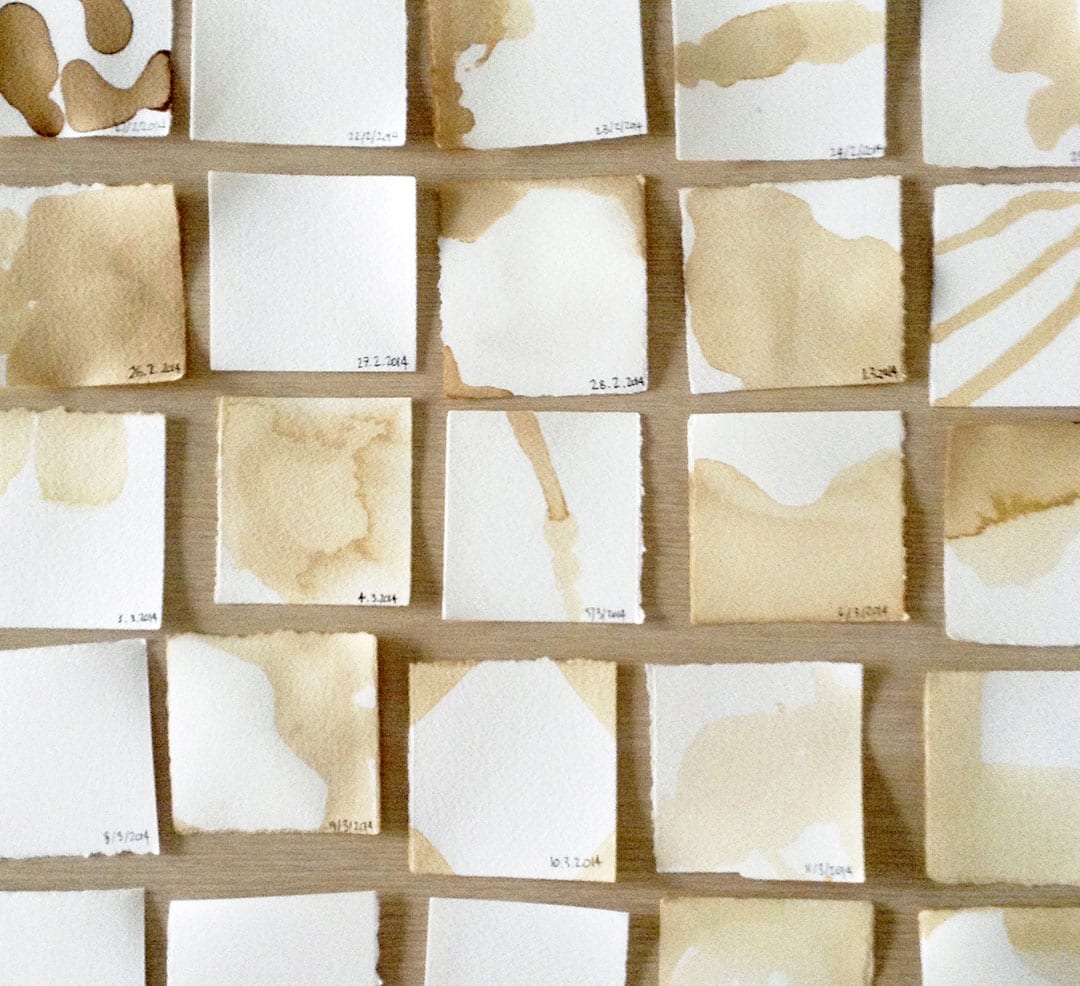
Ok, so both examples here are very heavy on the whole repetition thing. But you get the idea. And each of these examples:
- Allows the artist to give up the idea (and the pressure!) of making ground-breaking art
- Sets an approachable, bite-sized task that can be completed in a reasonable time-frame
- Turns making into a regular (in this case, daily) practice
- Gives the artist something brand new and physical to show for their work – every single day
- Brings attention to the process over the product
- Allows some room for manoeuvre
Take Action #2: Let go of the need for your creative output to be good.
When you’re in a creative funk, the last thing you need is the pressure to creating something amazing. Allow yourself to feel supported by the structure you decide on. From there, you can venture into a state of play…and maybe even enjoyment…and maybe even at some stage making something that looks remotely good. But I hereby give you permission to chill and to categorically not make anything amazing.
From Funk to Funky
(Yep, I went there.)
Ok friends, you know I love a good metaphor. And here it comes: Jazz. Utilising ritual and repetition is like setting the coolest jazz riff. It provides the key, the beat, the groove. We’ve got to get into that rhythm. Cosy up to it. Start moving.
Of course, the awesome thing about jazz is the improv. Once the riff is up and going, hectic improvisations can occur. Deviations are allowed, and play is encouraged.
The structure becomes the stomping ground of spontaneity.
The same goes for your art making.
Take Action #3: Take it one day at a time.
At first, don’t worry about anything else except finding your groove. Sooner or later, you’ll get comfortable with the rhythm of things, and your confidence will start to grow. Sooner or later, you’ll feel safe enough to play within your structure. Sooner or later, you’ll have an idea that makes you want to break out of it for a while.
And when you feel like breaking out: go ahead and do it! The tools have done their job – and in any case, they were always more like guidelines rather than actual rules.
The riff will always be there to come back to if you need it.
